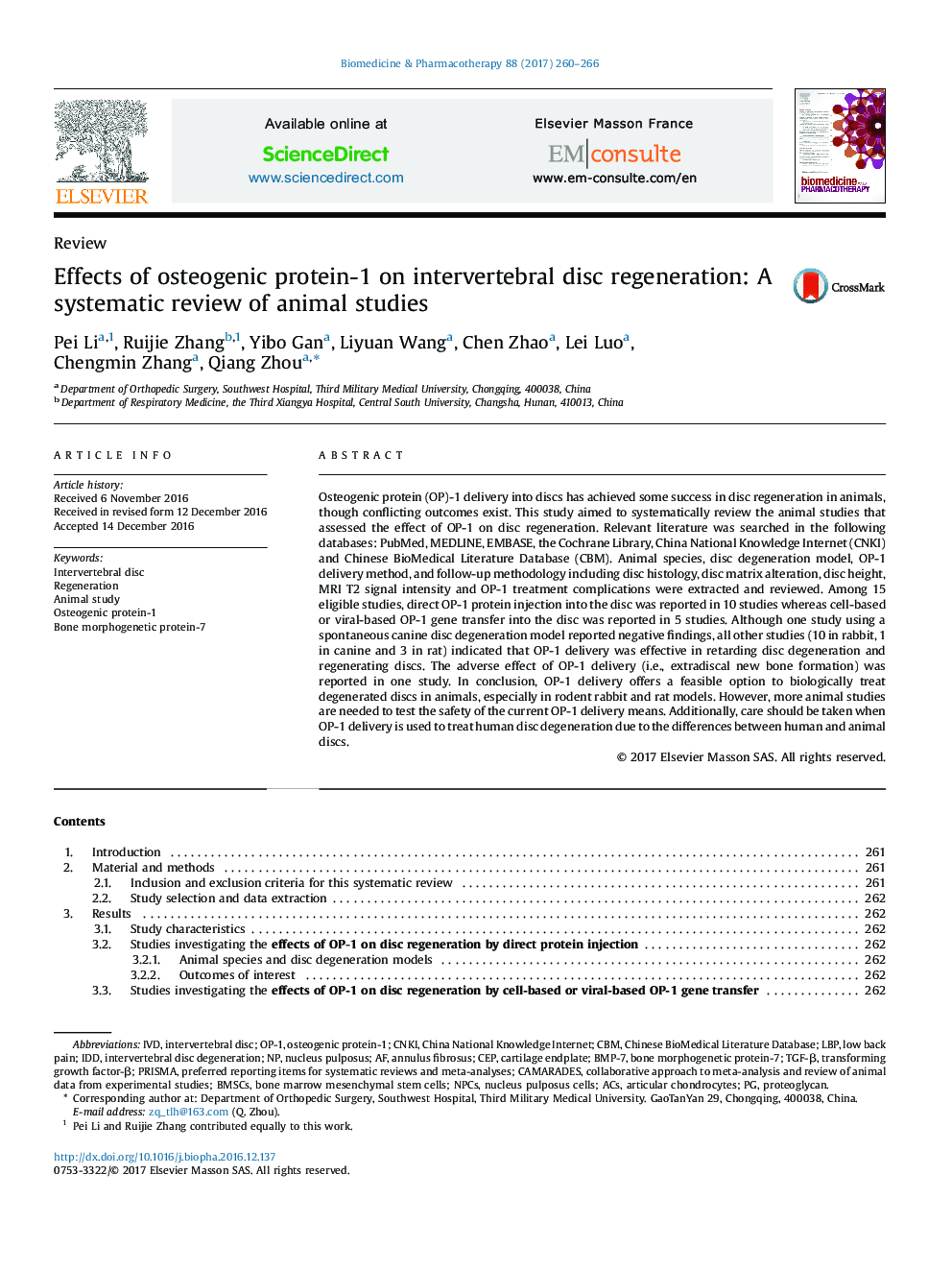| Article ID | Journal | Published Year | Pages | File Type |
|---|---|---|---|---|
| 5553107 | Biomedicine & Pharmacotherapy | 2017 | 7 Pages |
Osteogenic protein (OP)-1 delivery into discs has achieved some success in disc regeneration in animals, though conflicting outcomes exist. This study aimed to systematically review the animal studies that assessed the effect of OP-1 on disc regeneration. Relevant literature was searched in the following databases: PubMed, MEDLINE, EMBASE, the Cochrane Library, China National Knowledge Internet (CNKI) and Chinese BioMedical Literature Database (CBM). Animal species, disc degeneration model, OP-1 delivery method, and follow-up methodology including disc histology, disc matrix alteration, disc height, MRI T2 signal intensity and OP-1 treatment complications were extracted and reviewed. Among 15 eligible studies, direct OP-1 protein injection into the disc was reported in 10 studies whereas cell-based or viral-based OP-1 gene transfer into the disc was reported in 5 studies. Although one study using a spontaneous canine disc degeneration model reported negative findings, all other studies (10 in rabbit, 1 in canine and 3 in rat) indicated that OP-1 delivery was effective in retarding disc degeneration and regenerating discs. The adverse effect of OP-1 delivery (i.e., extradiscal new bone formation) was reported in one study. In conclusion, OP-1 delivery offers a feasible option to biologically treat degenerated discs in animals, especially in rodent rabbit and rat models. However, more animal studies are needed to test the safety of the current OP-1 delivery means. Additionally, care should be taken when OP-1 delivery is used to treat human disc degeneration due to the differences between human and animal discs.
